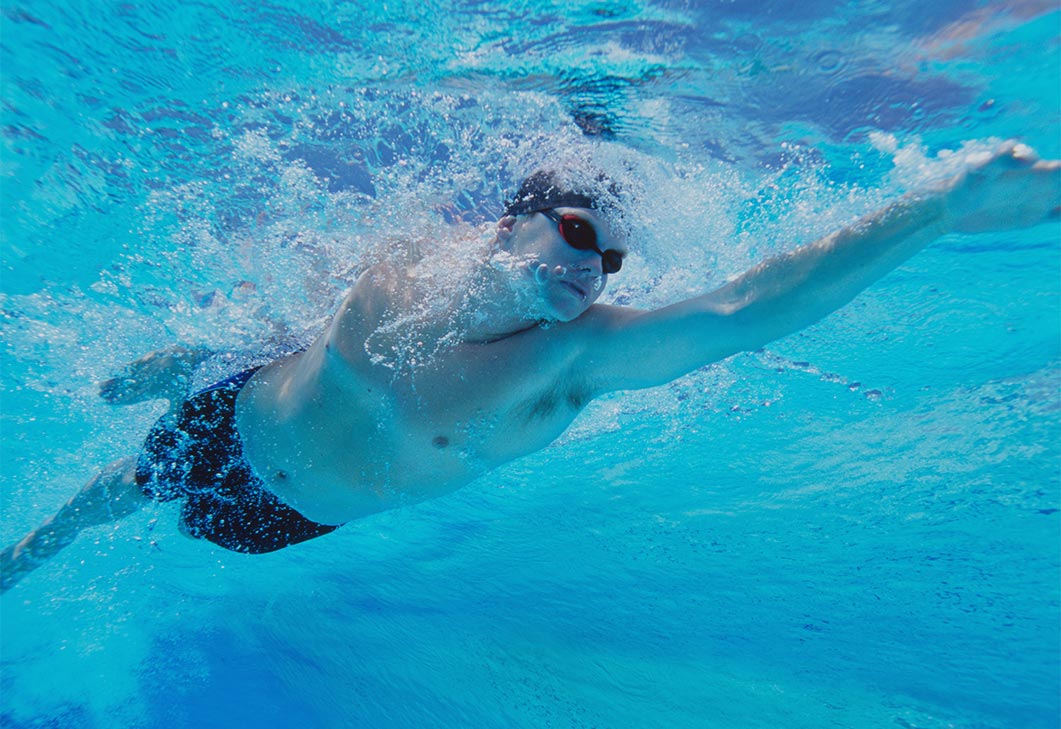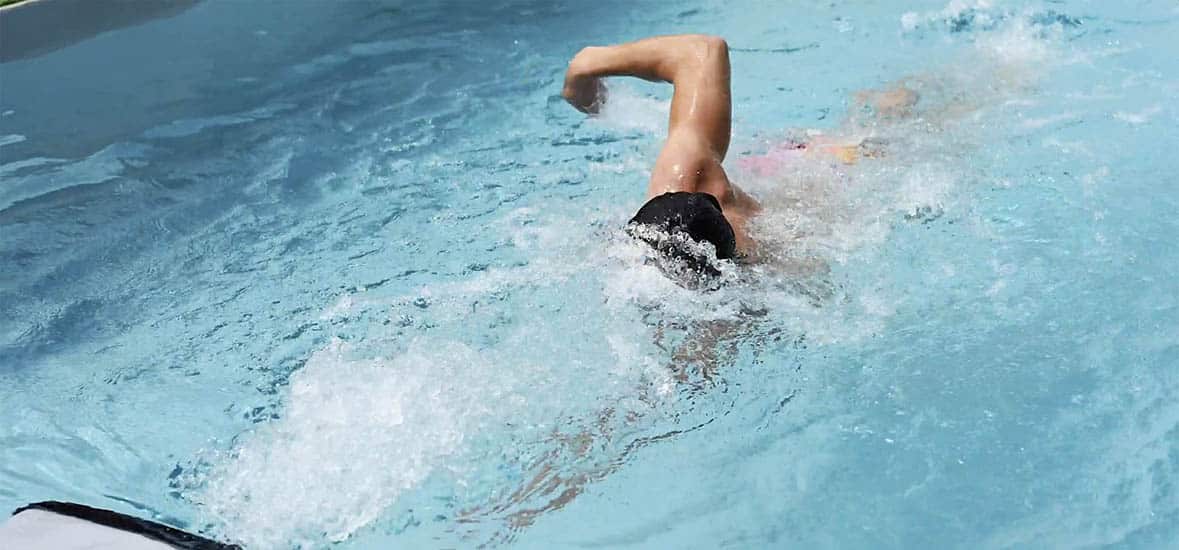
Swimming at home: what benefits and solutions?
Swimming at home: what benefits and solutions?
Swimming is an all-round sport, recommended for all ages and all physical conditions. What are its benefits? How can you practice it efficiently at home? Find out everything there is to know about how to enjoy swimming at home, even if you only have a small pool.

Preserve your joints and tone your muscles
The main reason why swimming at home is so popular, especially with the medical profession, is that it is a sport that has no negative impact on the joints or the back. This makes swimming a recommended activity for young and old alike, regardless of their initial physical condition.
In fact, swimming at home is particularly recommended for people with arthritis and osteoarthritic pain. It will help them get back into shape, take care of their joints gently, and improve their posture, reducing the risk of scoliosis for example.
This is all the more true since the weightlessness you feel in the water can work all the muscles of the body, without violent effort. Moreover, there is no need to carry weights, since the resistance of the aquatic environment is sufficient to improve muscle mass. Finally, people who are just getting back into sport will appreciate being able to safely perform movements that would be more difficult to perform without relying on the buoyancy of the body in water.
Also read: Mini pool and counter-current swimming: are they compatible?
A good way to control your weight
400: that’s the number of calories burned in one hour of swimming at moderate speed. This figure can rise to 900 if you like to push your limits! Swimming at home is therefore a good ally when it’s comes to improve weight control:
- if you want to lose weight, it is recommended to swim three to four times a week, for 40 minutes
- if you want to maintain your current weight, two to three sessions should be sufficient.Whatever your case, be sure to combine swimming with a balanced diet and perhaps even call for the services of a nutritionist.
It is possible to practice swimming at home
Do you have a pool on your property? 10 to 25 metres is the recommended length to practice swimming under the best conditions, without having to stop too often to change direction.
Perhaps your pool is not long enough? Are you afraid of moving too quickly from one side to the other and therefore being held back in your progress? There is a way you can practice swimming at home in a small pool: counter-current swimming.
How does it work? A device, placed at the edge of the pool, allows you to swim in one place, as if you were swimming without limits and/or in a natural environment. It is also possible to adapt the flow of water to your level of fitness: the gentlest setting if you are a beginner, the most intense setting to improve, little by little, your times in an Olympic-sized pool or to prepare you for a sporting event such as a triathlon (swimming, running, cycling).
Also read: What swim training for triathlon?
What is the best swim stroke for counter-current swimming?
The question remains: what type of swimming can I do in a pool equipped with a counter-current swimming system? The answer is simple: every type! Breaststroke, crawl and backstroke are all possible. Nevertheless, depending on your level of fitness, we recommend the following:
- Breaststroke if you are a beginner. If you don’t like to put your head under water yet and if you want to burn calories quickly and get some exercise
- Crawl if you already have good experience swimming in a classic pool and know how to coordinate your breathing and your movements
- Backstroke if you are “between levels”, experienced enough to change from breaststroke but still too much of a beginner to put your head under water. You will also appreciate the benefits of this swim stroke for your back, both in terms of stretching and muscle building.
Are you interested in counter-current swimming?
Feel free to contact our experts to talk about your needs !



